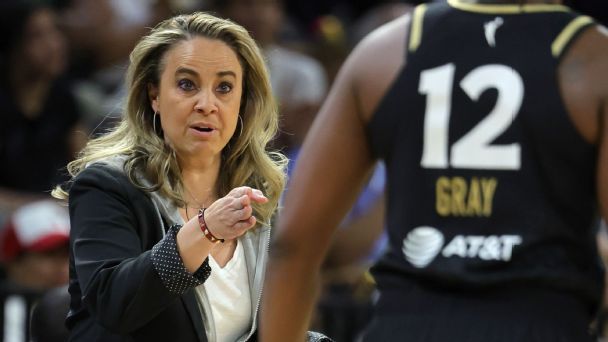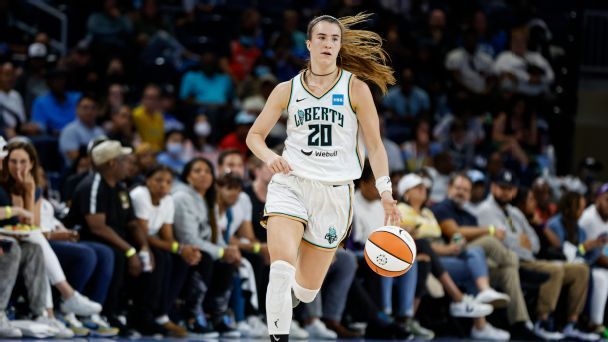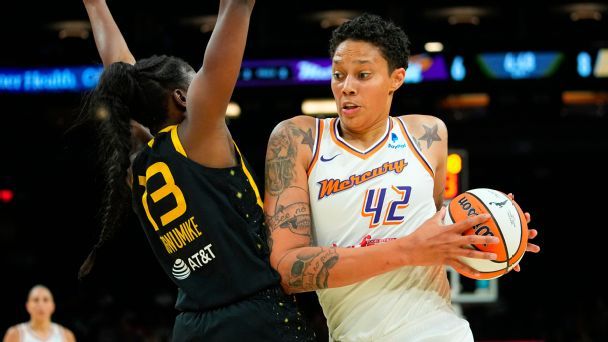The WNBA has witnessed an explosion in the number of triple-doubles over the past few years. After 11 occurred across the league's first 25 seasons, nine happened in the summer of 2022 alone. What explains the phenomenon, how much more frequently could they happen and which players might add their names to the record books?
Inside the WNBA’s
triple-double explosion

Triple-doubles and near misses
Eleven players account for 20 triple-doubles in WNBA history, with Sheryl Swoopes -- who recorded the first -- Candace Parker, Courtney Vandersloot, Sabrina Ionescu and Alyssa Thomas repeating the feat more than once. Last summer, Thomas compiled a career's worth of triple-doubles after the All-Star break, finishing with four in 2022 and back-to-back ones in the WNBA Finals. Before her outburst, no player had recorded one so deep into the postseason.
Several other all-time greats came close to joining the likes of Thomas et al. Here's the league's history of triple-double performances in purple and some near misses in blue.


How the WNBA has evolved
Just as basketball as a whole has evolved over time, so has the style of play in the WNBA. Now more than ever there's a premium on 3-point shooting and spacing (and not just among guards), as well as implementing fast-paced and free-flowing offenses featuring players capable of playing multiple positions on the floor. Here is an up-close look at how some of those trends have manifested over the past 25-plus years in the W.
The emergence of free-form offenses in the WNBA has required players to be more comfortable playing multiple positions on the floor and showcasing different skill sets, such as passing for forwards -- not to mention generally more scoring and assist opportunities as a whole.
At the collegiate level, where there are significantly more D-I teams, triple-doubles occur even more frequently. Twelve players have recorded more triple-doubles in their college careers than any WNBA player has as a pro, a group that features Oregon's Ionescu (26), Iowa's Caitlin Clark (11), Penn State's Suzie McConnell (7), Stanford's Nicole Powell (6), Maryland's Thomas (6) and Baylor's Griner (5). With talent so spread out across the college landscape, a single player is more likely to have the ball in her hands and make her impact felt in a multitude of ways.
“I think the game is changing, I think we’re gonna very soon see this on a nightly basis.”
Aces forward Candace Parker

How players have changed
All-time great Sheryl Swoopes, one of five players to boast multiple triple-doubles in the league, was one of the WNBA's early "positionless" players, at 6-foot-0 capable of playing shooting guard, small forward and power forward and even bringing the ball up the court at times. Over two decades after she first played in the W, it's increasingly difficult to put WNBA players -- guards, wings or bigs -- into a singular box or categorize them as a specific position. Players are consequently able to stuff the stat sheet in myriad ways -- and sometimes situate themselves in triple-double territory.
No players embody the trend of positionless basketball more than "unicorns" Parker (6-4) and Thomas (6-2). Both are technically posts but are excellent facilitators, and Parker specifically has guard skills and shooting ability.
Vandersloot and Ionescu, on the other hand, are point guards capable of putting up rebounding numbers more commonly seen from bigs. Players such as Chelsea Gray, Moriah Jefferson and Temeka Johnson -- the latter two 5-foot-6 and 5-foot-3, respectively -- also had nights when they dominated the glass.
“As you’re trying to evolve as a basketball player, you really want to be able to help in many categories aside from just one, because if Plan A doesn’t work, you want to follow Plan B or C.”
Liberty guard Sabrina Ionescu

The next triple threats
With the way the game is evolving and with players becoming more multifaceted, 2022 might prove to be just the start of triple-doubles becoming more commonplace in the WNBA. But who's got next on the triple-double front? Here are some current pro players, plus some budding stars in the college ranks, to keep an eye on.
The momentum and growing popularity surrounding the WNBA and women's basketball are undeniable, as is the quality of the product. Just look at the high-octane offense of the recent champion Las Vegas Aces, or positionless players like Ionescu and Thomas. Better yet, the college players entering the W in 2024 and 2025 are expected to be game-changers at the professional level. And so as the WNBA increasingly embraces the modern game -- and such talented, multidimensional players stake their claim -- the recent triple-double explosion might prove to be only the start of what's to come.













